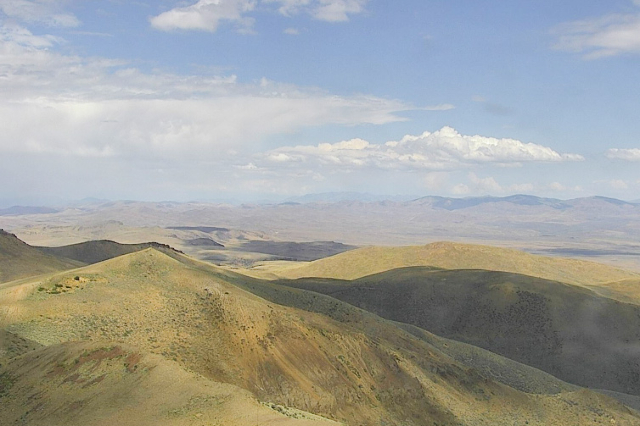High-tech cameras watch for fires atop Nevada mountains
RENO — Remote cameras on four Northern Nevada mountaintops are helping federal land managers get an early jump on snuffing out fires in desolate regions.
The U.S. Bureau of Land Management camera lookouts are incorporated with the University of Nevada Reno's Seismological Laboratory's earthquake monitoring communications network, a private, high-speed Internet connectivity capable of transmitting not only seismic and environmental data but also live-streaming high-definition images.
It's the modern day, high-tech version of fire lookout towers once manned by binocular-wielding human spotters.
The cameras are solar-powered and can be positioned remotely.
Land managers are able to watch the landscape for puffs of smoke that otherwise might not be detected until fires grow. High-definition screens at BLM dispatch centers around the state show constant views from the cameras. The BLM has dispatch centers in Las Vegas, Minden, Winnemucca, Elko and Ely.
The public can also view the camera feeds online.
"Everyone can be their own fire guard," Graham Kent, director of UNR's seismology lab, said Wednesday during a demonstration.
The cameras are scattered in Northern and central Nevada, thanks to a five-year project funded with a $250,000 grant from the BLM, said Paul Petersen, BLM acting state fire management officer.
A similar camera network that began as a pilot project is already in place around the Tahoe Basin.
While the seismology lab does have a network that stretches to Las Vegas, there are no immediate plans to expand the camera program to Southern Nevada, mainly because the dense population around Las Vegas means plenty of eyes to watch for smoke.
"Whenever we have a fire there, we have thousands of people calling on it," Petersen said. "We might move down to Las Vegas and put some down there eventually, but right now it's not part of the planning stages."
The bigger concern is detecting fires in remote regions before they grow into flaming monsters.
Petersen said the cameras will help protect critical sage grouse habitat. Fire in the Great Basin is a big threat to the chicken-size bird under consideration for federal protection by the U.S. Fish & Wildlife Service. A decision on whether to list the bird under the Endangered Species Act will be issued this fall.
"We're focusing on sage grouse habitat, where we don't really have a lot of people out there," Petersen said.
The cameras are on towers 20 feet to 40 feet tall.
They are on the 10,000-foot Jacks Peak between Elko and Owyhee; 6,500-foot Midas Peak 40 miles north of Battle Mountain; 7,500-foot Callaghan Peak north of Austin near Iowa Canyon Reservoir; and Fairview Peak 30 miles southwest of Fallon near Sand Mountain.
The real-time images are high-definition resolution and cameras can be zoomed in or zoomed out to detect whether a puff seen on the horizon is smoke or twirling dust.
"You can basically watch the grass grow," Kent said.
After thunderstorms roll through a region, monitors can watch for the first signs of lightning strikes.
"The cameras are strategically sited to provide a landscape overview," Petersen said, adding all have on-demand time-lapse to allow playback through different time periods.
"This cameras network gives fire managers a real time picture of what is happening from both a weather and fire-behavior standpoint," he said.
The cameras have near-infrared detection, making small fires easy to spot at nighttime.
"Fires will stick out like a Roman torch," Kent said.
Soon after it was installed this spring, the camera on Midas Peak picked up a large lightning strike 104 miles away near Jordon Valley, Ore., and another fire north of Interstate 80 between Winnemucca and Elko, officials said. The early detection allowed for a quick firefighting response.
Contact Sandra Chereb at schereb@reviewjournal.com or 775-687-3901. Find her on Twitter: @SandraChereb

















